Group
Control Of Soil And Water Pollution
CONSOWAT
Description
The CONSOWAT group works on the design of strategies to minimise soil and water pollution, contributing to the development of new environmentally friendly technologies that lead to a more sustainable management of the soil-water system.
In relation to soils, we apply chemical, biological and omic techniques both for the prevention of soil contamination and for the remediation of contaminated soils.
Objectives
Components
Research Staff

Morillo González, Esmeralda
Research Scientist.
morillo[AT]irnase.csic.es
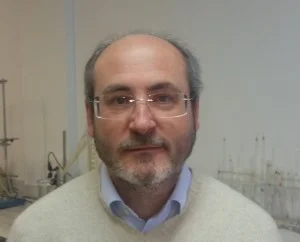
Undabeytia López, Tomás
Group leader. Research Scientist.
undabeyt[AT]irnase.csic.es
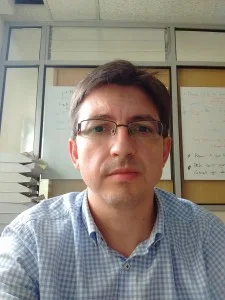
Villaverde Capellán, Jaime
Senior Scientist
jvillaverde[AT]irnase.csic.es
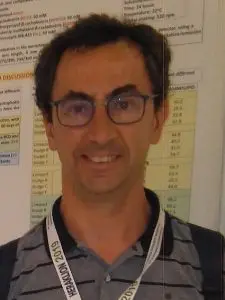
Madrid Díaz, Fernando
Senior Scientist
fmadrid[AT]irnase.csic.es
Technical Staff
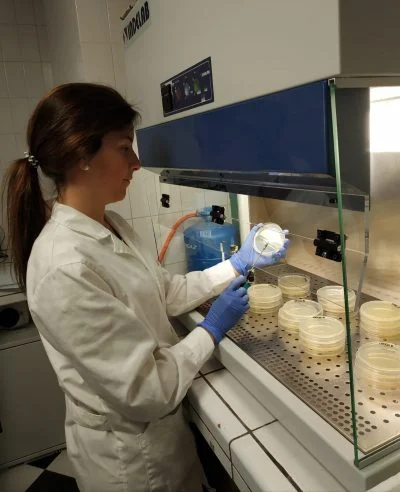
Rubio Bellido, Marina
Higher graduate in technical and professional activities
Doctor
mrubio[AT]irnase.csic.es
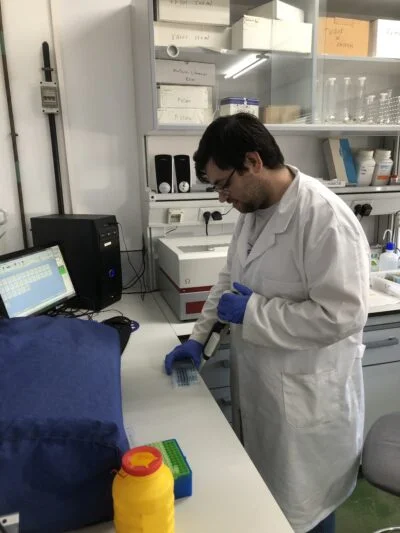
JIménez Barrera, José Manuel
Research Degree Holders
Chemistry Graduate
josemanuel.j.b[AT]csic.es
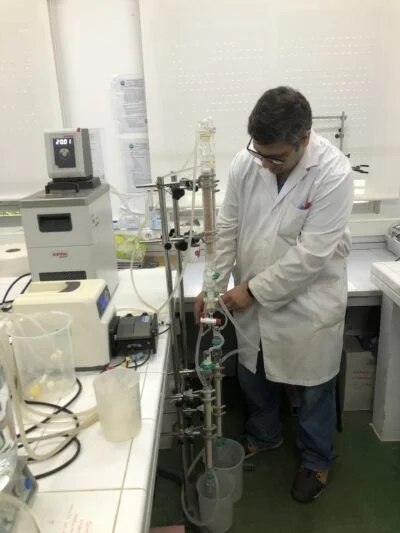
Arenas Álvaro, Manuel
Higher Technician in Analysis and Control
Trainee Staff (2021-2022)
Enna Citlalli Vidal Martínez (JAE Introduction to Research Fellowship)
Visiting Staff
The group regularly receives staff from other institutions and students to carry out Bachelor’s or Master’s Degree Final Projects, Curricular or Company Internships or the Erasmus Programme of the European Union.
In the year 2021 we have had with us:
Mattijs Quartier (Belgium, Erasmus Programme)
Ángela Sofía Ocampo Amaya (Curricular Internship in Company of the Master’s Degree in Advanced Studies in Chemistry, US)
Antonino Martino (Italy, Erasmus Programme)
In the year 2022:
Ewelina Czyz (Poland, Erasmus Programme)
Pilar Gómez Cano (Faculty of Chemistry, University of Seville)
Bibiazhar Suleiman (Kazakhstan, Erasmus Programme)
Angela Sofía Paronetto (Argentina, Predoctoral Stay)
In the year 2023:
Enna Citlalli Vidal Martínez (Mexico, Extracurricular Master Internship, University of Seville)
In the year 2024:
Enna Citlalli Vidal Martínez (JAE introductory research fellowship)
Other members of the research group
María del Carmen Florido Fernández. Associate Professor. Department of Crystallography, Mineralogy and Agricultural Chemistry of the University of Seville.
Alba Lara Moreno. Scholarship holder Margarita Salas. Department of Microbiology and Parasitology (University of Seville).
Lines of research
Projects
KETs para la eliminación de contaminantes emergentes en aguas regeneradas en el espacio SUDOE. European Union (SUDOE programme). IRNAS principal investigator: Tomás Undabeytia. (2016-2019).
EuropeAid: Promoting multidisciplinary EU-China collaborations in science and business to address food security, water and environmental stress (SEW-REAP). European Union. European Union. Universidad de Lancáster, Agencia Estatal CSIC, State Key Laboratory of Agrobiotechnology, Chinese Academy of Sciences-Guanzhou Institute of Geochemistry. IRNAS principal investigator: Esmeralda Morillo. Coordinator: Silvia Lacorte (IDAEA-CSIC). (2015-2018).
Diffusion of nanotechnology based devices for water treatment and recycling. European ENPI-CBC-MED project. IRNAS principal investigator: Tomás Undabeytia. (2012-2015).
Empleo de materiales nanoestructurados en la implementación de formulaciones de agroquímicos (PRI-PIBAR-2011-1393). Ministry of Science and Innovation (MINCYT-ANPCT). Spain-Argentina bilateral project. IRNAS principal investigator: Tomás Undabeytia. Coordinator: Tomás Undabeytia. (2012-2014).
Formulaciones de plaguicidas basadas en minerales de la arcilla para una aplicación sostenible (A/023433/09). AECID (Ministry of Foreign Affairs). Spain-Argentina bilateral project. IRNAS principal investigator: Esmeralda Morillo. Coordinator: Esmeralda Morillo. (2010-2011).
Effect of cyclodextrins complexation on physicochemical properties of pesticides (1090254). FONDECYT (Fondo Nacional de Desarrollo Científico y Tecnológico, Chile). Spain-Chile bilateral project. IRNAS principal investigator: Esmeralda Morillo. Coordinator: Claudia Yáñez (University of Chile). (2009-2013).
Optimization of processes to prepare sorbents of pesticides from clay minerals. CSIC-Czech Academy of Sciences. Bilateral project Spain-IRNAS principal investigator: Celia Maqueda. Coordinator: Celia Maqueda (2009-2010).
Formulaciones de plaguicidas basadas en minerales de la arcilla para una aplicación sostenible (A/016047/08). AECID (Ministry of Foreign Affairs). Spain-Argentina bilateral project. IRNAS principal investigator: Esmeralda Morillo. Coordinator: Esmeralda Morillo. (2009-2010).
Urban soils as a source and sink for pollution: Towards a common European methodology for the evaluation of their environmental quality as a tool for sustainable resource management (EVK4-CT-2001-00053) Unión Europea. IRNAS principal investigator: Luis Madrid. (2002-2004).
Interaction of some herbicides with heavy metal ions. Adsorption of complexes on humic substances. (2000MA0024). National Centre for Coordination and Planning of Scientific and Technical Research. Spain-Morocco cooperation. IRNAS principal investigator: Esmeralda Morillo. Coordinator: Esmeralda Morillo. (2000-2001).
Effect of different organic residues added to soils of Morocco and Spain as fertilizers on the adsorption and leaching of pesticides (2001MA0004). AECID (Ministry of Foreign Affairs). Spain-Morocco bilateral project. IRNAS principal investigator: Esmeralda Morillo. Coordinator: Esmeralda Morillo. (2000-2001).
Valorization of rice cultivation residues to mitigate greenhouse gas emissions. Ref. TED2021-130964B-I00. Spanish Ministry of Science and Innovation. 2022-2023. Tomás Undabeytia and José María de la Rosa. 2022-2023.
Uso de métodos químicos y biológicos para la reducción de contaminantes orgánicos en biosólidos. Implicaciones de su aplicación como fertilizantes en suelos agrícolas (CTM2017-82472-C2-1-R). Ministry of Economy, Industry and Competitiveness. Principal Investigators: Esmeralda Morillo and Jaime Villaverde. (2018-2021).
Eliminación de cianobacterias y cianotoxinas en aguas: Una aproximación tecnológica basada en polímeros y minerales de arcilla (CTM2016-77168-R). Ministry of Economy and Competitiveness. Principal Investigator: Tomás Undabeytia. (2018-2020).
Compuestos biodegradables para la descontaminación de suelos. Efecto de diferentes co-contaminantes (CTM2013-42599-R). Ministry of Economy and Competitiveness. Principal Investigator: Esmeralda Morillo. (2014-2017).
Nuevas tecnologías en procesos de tratamiento de aguas mediante el uso de composites basados en minerales de arcilla modificados (CTM2013-42306-R). Ministry of Economy and Competitiveness. Principal Investigator: Tomás Undabeytia. (2014-2016).
Formulaciones de herbicidas basadas en minerales de la arcilla y tensioactivos respetuosos con el medio ambiente (CTM2009-07425). Ministry of Science and Innovation. Principal Investigator: Tomás Undabeytia. (2010-2013).
Envejecimiento y biodisponibilidad de residuos de plaguicidas en suelos contaminados y su modelización (CTM2009-07335). Ministry of Science and Innovation. Principal Investigator: Jaime Villaverde. (2010-2013).
Seguimiento del contenido de metales potencialmente tóxicos en suelos urbanos de Sevilla: Influencia del uso de diversas enmiendas orgánicas (2004-4-0E-322). Special Intramural Project CSIC. Principal Investigator: Luis Madrid Sánchez del Villar. (2007-2010).
Movilidad en columnas de suelos de formulaciones de liberación lenta de herbicidas preparadas mediante combinación de ciclodextrinas y arcillas pilareadas. Bioeficacia de las formulaciones en suelos (2004 4 OE 194). Special Intramural Project CSIC. Principal Investigator: Tomás Undabeytia. (2006-2007).
Recuperación de suelos contaminados mediante el uso de ciclodextrinas. (CTM2006-04626/TECNO). CICYT. Principal Investigator: Esmeralda Morillo. (2006-2010).
Preparación de formulaciones de liberación controlada de herbicidas utilizando arcillas modificadas mediante tratamientos mecánicos (ultrasonidos y molienda) y químicos. (AGL2005-00164). CICYT. Principal Investigator: Celia Maqueda. (2005-2008).
Identificación de la fuente de contaminación con metales potencialmente tóxicos en suelos urbanos de Sevilla y su posible rehabilitación por medio de diversas enmiendas (CTM2005-02256/TECNO). CICYT. Principal Investigator: Luis Madrid Sánchez del Villar. (2005-2008).
Formulaciones de liberación controlada de herbicidas: bioeficacia, lixiviación y degradación en suelos (REN2003-01509). CICYT. Principal Investigator: Esmeralda Morillo. (2003-2006).
Diseño de sustratos de vivero basados en composts urbanos para el cultivo de plantas forestales (AGL2002-02633 AGR-FOR). Ministry of Science and Technology. Principal Investigator: Rafael López Núñez. 2002-2006.
Desarrollo de formulaciones de liberación controlada de plaguicidas mediante el uso de surfactantes y ciclodextrinas en combinación con arcillas (AGL2002-00993). Ministry of Science and Technology. Principal Investigator: Tomás Undabeytia. (2002-2005).
Calidad de suelos urbanos de Sevilla. Seguimiento de la disponibilidad de elementos tóxicos y propuestas para rehabilitación de áreas contaminadas (REN2002-03309). Ministry of Science and Technology. Principal Investigator: Luis Madrid Sánchez del Villar. (2002-2005).
Evolución de parámetros indicadores de la fertilidad del suelo en fincas en reconversión hacia la agricultura ecológica. Repercusión en los cultivos (AGL2000-0493-C02-01). CICYT. Principal Investigator: Celia Maqueda. (2000-2003).
Desarrollo de sistemas de liberación controlada de plaguicidas mediante el empleo de derivados de celulosa y liposomas. (REN2000-1540/TECNO). CYCYT. Principal Investigator: Esmeralda Morillo. (2000-2003).
Biorrecuperación de lodos de depuradora: eliminación de contaminantes emergentes provenientes de productos farmacéuticos y de higiene personal para un uso más sostenible como enmienda orgánica en agricultura. (PY20_01069). Junta de Andalucía. 2021-2023. PI: Esmeralda Morillo.
Desarrollo de nuevos materiales filtrantes con propiedades antimicrobianas y antivíricas para tratamientos de aguas (P18-RT-5098). Junta de Andalucía. Principal Investigator: Tomás Undabeytia. (2020-2023).
Diseño y desarrollo de aplicaciones clínicas y medioambientales de arcillas como nanomateriales naturales de liberación controlada (RNM-1897). Junta de Andalucía. IRNAS principal investigator: Tomás Undabeytia. Coordinator: Claro Ignacio Sáiz Díaz (CSIC-IACT). (2014-2018).
Evaluación de la toxicidad de residuos envejecidos de plaguicidas en suelos contaminados (RNM 894). Junta de Andalucía. Principal Investigator: Jaime Villaverde. (2014-2017).
Geles de minerales de arcilla en el diseño de formulaciones de herbicidas que reduzcan la contaminación ambiental (RNM-4581). Junta de Andalucía. Principal Investigator: Celia Maqueda. (2010-2013).
Utilización de polímeros biodegradables para la preparación de formulaciones de liberación controlada de plaguicidas. (P06-FQM-01909). Junta de Andalucía. Principal Investigator: Esmeralda Morillo. (2007-2010).
Parámetros físicos, químicos y microbiológicos en suelos con distintos años de manejo ecológico frente a manejo convencional y su repercusión en los cultivos (Expdte 92162/1). Empresa Pública Desarrollo Agrario y Pesquero. Junta de Andalucía. Principal Investigator: Celia Maqueda. (2005-2008).
Respuesta de distintos tipos de suelos en sus propiedades físicas químicas y biológicas a distintos tipos de aportes de fertilizantes, orgánicos y minerales. Influencia en la producción y calidad de los cultivos (PIA03-061). Junta de Andalucía. Principal Investigator at IRNAS: Celia Maqueda. Coordinador: Juan Carlos Ruiz Porras (IFAPA). (2003-2006).
Acción de los fertilizantes y el laboreo en la dinámica de nutrientes y elementos traza en los suelos (ACC-1426-AGR 2003). Junta de Andalucía. Principal Investigator: Francisco Cabrera. (2003-2004).
Efecto de distintas enmiendas orgánicas en la dinámica de plaguicidas y nutrientes del suelo (ACC-917NM-2002). Junta de Andalucía. Principal Investigator: Celia Maqueda. (2002-2004).
Aplicación de enmiendas orgánicas a suelos para la prevención de la contaminación por metales y plaguicidas (ACC-110-RNM-2001). Junta de Andalucía. Principal Investigator: Celia Maqueda. (2001-2002).
Sistemas de liberación controlada de plaguicidas mediante el empleo de polímeros semisintéticos (ACC-160-CTS-2001). Junta de Andalucía. Principal Investigator at IRNAS: Esmeralda Morillo. Coordinator: Antonio Rabasco (University of Seville). (2001-2002).
Study of soil leaching of new formulations of the herbicide flazasulfuron. Funding company: ROTAM AGROCHEM INTERNATIONAL COMPANY LIMITED. Principal Investigator: Tomás Undabeytia. (2020-2021)
Estudios por respirometría de fangos activos procedentes de una planta de efluentes de CEPSA. Funding company: CEPSA. Principal Investigator: Fernando Madrid. (2018-2018).
Sistema modular autosuficiente de purificación de aguas para el consumo humano. Funding company: Arsinger S.L. Principal Investigator: Tomás Undabeytia. (2015-2015).
Materials Transfer Agreement Patent W02009101232. Company: SYNGENTA. 2010-2011. Principal Investigator: Tomas Undabeytia.
MTA clay-phosphatidilcholine-Al formulations. Materials Transfer Agreement Patent W02009101232. Funding company: SYNGENTA. Principal Investigator: Tomás Undabeytia. (2010-2011).
Estudio de la dinámica y cinética de ciertos plaguicidas en el medio acuático. Funding company: Infraestructura y Ecología, S.L. Principal Investigator: Esmeralda Morillo. (2009-2010).
Estudio de la calidad del agua del Río Guadaíra. Funding company: Ayuntamiento de Alcalá de Guadaíra. Principal Investigator: Fernando Madrid. (2006-2008).
Estudio de la calidad del agua del Río Guadaíra. Funding company: Ayuntamiento de Alcalá de Guadaíra. Principal Investigator: Fernando Madrid. (2002-2004).
Patents
Publications
I. Aguilar-Romero, F. Madrid, J. Villaverde, E. Morillo. Ibuprofen-enhanced biodegradation in solution and sewage sludge by a mineralizing microbial consortium. Shift in associated bacterial communities. Journal of Hazardous Materials, 464, Article 132970. (2024). DOI: 10.1016/j.jhazmat.2023.132970
Gardi I., Mishael Y.G., Lindahl M., Muro-Pastor A.M., Undabeytia T. Coagulation-flocculation of Microcystis aeruginosa by polymer-clay based composites. Journal of Cleaner Production 394, 136356 (2023).
Vargas-Ordóñez A., Aguilar-Romero I., Villaverde J., Madrid F., Morillo E. Isolation of Novel Bacterial Strains Pseudomonas extremaustralis CSW01 and Stutzerimonas stutzeri CSW02 from Sewage Sludge for Paracetamol Biodegradation. Microorganisms 11, 196 (2023).
A. Lara-Moreno, E. Morillo, F. Merchán, J.L. González-Pimentel, J. Villaverde. Genome sequence of Stenotrophomonas indicatrix CPHE1, a powerful phenanthrene-degrading bacterium. 3 Biotech 13, Article 53 (2023). DOI: 10.1007/s13205-023-03469-3
A. Lara-Moreno, F. Merchán, E. Morillo, J. Zampolli, P. Di Gennaro, J. Villaverde. Genome analysis for the identification of genes involved in phenanthrene biodegradation pathway in Stenotrophomonas indicatrix CPHE1. Phenanthrene mineralization in soils assisted by integrated approaches. Frontiers in Bioengineering and Biotechnology, 11, Article 1158177 (2023). DOI: 10.3389/fbioe.2023.1158177
Lara-Moreno A., Aguilar-Romero I., Rubio-Bellido M., Madrid F., Villaverde J., Santos J.L., Alonso E., Morillo E. Novel nonylphenol-degrading bacterial strains isolated from sewage sludge: Application in bioremediation of sludge. Science of the Total Environment. 847, 157647 (2022).
Lara-Moreno A., Morillo E., Merchán F., Madrid F., Villaverde J. Chlorpyrifos Removal in an Artificially Contaminated Soil Using Novel Bacterial Strains and Cyclodextrin. Evaluation of Its Effectiveness by Ecotoxicity Studies. Agronomy 12, 1971 (2022).
Lara-Moreno A., Morillo E., Merchán F., Madrid F., Villaverde J. Bioremediation of a trifluralin contaminated soil using bioaugmentation with novel isolated bacterial strains and cyclodextrin. Science of the Total Environment 840, 156695 (2022).
Madrid F., Florido M.C., Rubio-Bellido M., Villaverde J., E. Morillo. Dissipation of a mix of priority PAHs in soils by using availability enhancers.
Effect of aging and pollutant interactions. Science of the Total Environment 831, 155744 (2022).
Lara-Moreno, A, Morillo, E., Villaverde, J. Enhanced Biodegradation of Phenylurea Herbicides by Ochrobactrum anthrophi CD3 Assessment of Its Feasibility in Diuron-Contaminated Soils. International Journal of Environmental Research and Public Health 19(3), 1365 (2022).
Benitez A.R. , Margalit D., Ryskin M., Dor M., Shuali U., Nir S., Polubesova T., Ben-Ari J., Kertsnus-Banchik J., Undabeytia T. Modified Compositions of Micelle–Clay and Liposome–Clay Composites for Optimal Removal from Water of Bacteria and Hydrophobic Neutral Chemicals. Applied Sciences 12(6) 3044 (2022).
Lara-Moreno, A, Villaverde J., Rubio-Bellido M., Madrid F., E. Morillo. Abiotic and Biological Technologies for the Remediation of Phenylurea Herbicides in Soils. Handbook of Environmental Chemistry 113, pp. 317-351 (2022). Ed. Springer Nature. E-ISSN:1867-979X.
Undabeytia, T., Shuali, U., Nir, S., Rubin, B. Applications of chemically modified clay minerals and clays to water purification and slow release formulations of herbicides. Minerals 11, Article number 9, Pages 1-42 (2021)
Lara-Moreno, A, Morillo, E., Merchán, F, Villaverde, J. A comprehensive feasibility study of effectiveness and environmental impact of PAH bioremediation using an indigenous microbial degrader consortium and a novel strain Stenotrophomonas maltophilia CPHE1 isolated from an industrial polluted soil. Journal of Environmental Management 289, 112512 (2021).
A. Lara-Moreno, J. Villaverde, M. Rubio-Bellido, F. Madrid, E. Morillo. Abiotic and biological technologies for the remediation of phenylurea herbicides in soils. In: Pesticides in Soils Occurrence, Fate, Control and Remediation. Rodríguez-Cruz y Sánchez-Martín (eds.). Part of the The Handbook of Environmental Chemistry series (113). Springer, Berlin, Heidelberg. https://doi.org/10.1007/698_2021_799. (2021).
Madrid F. , M. Rubio-Bellido, E. Morillo. Extraction of nonylphenol, pyrene and phenanthrene from sewage sludge and composted biosolids by cyclodextrins and rhamnolipids. Science of the Total Environment 715, 136986 (2020).
Galán-Jiménez M.C.; E. Morillo; F. Bonnemoy; C. Mallet; T. Undabeytia. A sepiolite-based formulation for slow release of the herbicide mesotrione. Applied Clay Sciences 189, Article 105503 (2020)
Flores F.M., T. Undabeytia, M. Jaworski, E. Morillo, R.M. Torres-Sánchez. Organo-montmorillonites as adsorbent materials for thiophanate-methyl removal: adsorption-desorption studies and technological applications. Journal of Environmental Chemical Engineering, Article 103806 (2020)
Morillo E., F. Madrid, A. Lara-Moreno, J. Villaverde. Soil bioremediation by cyclodextrins. A review. International Journal of Pharmaceutics 591, Article 119943 (2020)
Madrid F., R. Ballesteros, S. Lacorte, J. Villaverde, E. Morillo. Extraction of PAHs from an aged creosote-polluted soil by cyclodextrins and rhamnolipids. Side effects on removal and availability of potentially toxic elements. Science of the Total Environment 653: 384-392 (2019).
Madrid F., M. Rubio-Bellido, J. Villaverde, A. Peña, E. Morillo. Natural and assisted dissipation of polycyclic aromatic hydrocarbons in a long-term co-contaminated soil with creosote and potentially toxic elements. Science of the Total Environment 660: 705-714 (2019).
Villaverde J. , L. Láiz, A. Lara-Moreno, J.L. González-Pimentel, E. Morillo, Bioaugmentation of PAH-contaminated soils with novel specific degrader strains isolated from a contaminated industrial site. Effect of hydroxypropyl-β-cyclodextrin as PAH bioavailability enhancer. Frontiers in Microbiology 10, 2588 (2019).
Fuente A.D.L. , A.M. Muro-Pastor, F. Merchán, F. Madrid, J.I. Pérez-Martínez, T. Undabeytia, T. Electrocoagulation/flocculation of cyanobacteria from surface waters. Journal of Cleaner Production 238, 117964 (2019).
Santos, M. Jiménez, N. Calero, T. Undabeytia, Muñoz, J.A. Comparison of microfluidization and sonication to obtain lemongrass submicron emulsions. Effect of diutan gum concentration as stabilizer. LWT 114, 108424 (2019).
Undabeytia T., F. Madrid, J. Vázquez, J.I. Pérez-Martínez. Grafted Sepiolites for the Removal of Pharmaceuticals in Water Treatment. Clays and Clay Minerals 67: 173-182 (2019).
Ajmone-Marsan, F., Padoan, E., Madrid, F., Vrščaj, B., Biasioli, M., Davidson, C.M. Metal release under anaerobic conditions of urban soils of four european cities. Water, Air, and Soil Pollution 230: Article number 53 (2019)
Borrego-Sánchez, E. Gomez-Pantoja, E. Morillo, T. Undabeytia, C. Sainz-Díaz. Adsorption of the tallow amine ethoxylate surfactant Ethomeen T/15 on montmorillonite. Applied Clay Science (2018).
Villaverde J., M. Rubio-Bellido, A. Lara-Moreno, F. Merchan, E. Morillo. Combined use of microbial consortia isolated from different agricultural soils and cyclodextrin as a bioremediation technique for herbicide contaminated soils. Chemosphere 193: 118-125 (2018).
Rubio-Bellido M., E. Morillo, J. Villaverde. Assessment of soil diuron bioavailability to plants and microorganisms through non-exhaustive chemical extractions of the herbicide. Geoderma 312: 130-138 (2018).
Flores-Céspedes F.M., I. Daza-Fernández, M. Villafranca-Sánchez, M. Fernández-Pérez, E. Morillo, T. Undabeytia. Lignin and ethylcellulose in controlled release formulations to reduce leaching of chloridazon and metribuzin in light-textured soils. Journal of Hazardous Materials 343: 227-234 (2018).
Lozano-Morales, I. Gardi, S. Nir, T. Undabeytia, Removal of pharmaceuticals from water by clay-cationic starch sorbents. Journal of Cleaner Production 190: 703-711 (2018).
Moameri, M., Jafari, M., Tavili, A., Motasharezadeh, B., Zare Chahouki, M.A., Madrid F. Investigating lead and zinc uptake and accumulation by stipa hohenackeriana trin and rupr. In field and pot experiments. Bioscience Journal 34: 138-150 (2018).
Morillo E., J. Villaverde. Advanced technologies in remediation of pesticide contaminated soils. Science of the Total Environment 586: 576–597 (2017).
Villaverde J., M. Rubio-Bellido, F. Merchan, E. Morillo. Bioremediation of diuron contaminated soils by a novel degrading microbial consortium. Journal of Environmental Management 188: 379-386 (2017).
Maqueda C., T. Undabeytia, J. Villaverde, E. Morillo. Behaviour of glyphosate in a reservoir and the surrounding agricultural soils. The Science of the Total Environment 593: 787-795 (2017).
Flores F.M., T. Undabeytia, E. Morillo, R.M. Torres-Sánchez. Technological applications of organo-montmorillonites in the removal of pyrimethanil from water. adsorption/desorption and flocculation studies. Environmental Science and Pollution Research 24: 14463-14476 (2017).
Tejada M., E. Morillo, I. Gómez, F. Madrid, T. Undabeytia, T. Effect of controlled release formulations of diuron and alachlor herbicides on the biochemical activity of agricultural soils. Journal of Hazardous Materials 322: 334-347 (2017).
Lelario, I. Gardi, Y. Mishael, N. Dolev, T. Undabeytia, S.Nir, L. Scrano, S.A. Bufo. Pairing micropollutants and clay-composite sorbents for efficient water treatment: Filtration and modeling at a pilot scale. Applied Clay Sciences 137: 225-232 (2017).
Marco-Brown J.L., T. Undabeytia, R.M. Torres-Sánchez, M.D. Afonso. Slow-release formulations of the herbicide picloram by using Fe-Al pillared montmorillonite. Environmental Science Pollution Research 24: 10410-10420 (2017).
Madrid F., M. Rubio-Bellido, J. Villaverde, M. Tejada, E. Morillo. Natural attenuation of fluorene and pyrene in contaminated soils and assisted with hydroxypropyl-β-cyclodextrin. Effect of co-contamination. Science of the Total Environment 571: 42-49 (2016).
Rubio-Bellido M., E. Morillo, J. Villaverde. Effect of addition of HPBCD on diuron adsorption–desorption, transport and mineralization in soils with different properties. Geoderma 265: 196-203 (2016).
Galán-Jiménez M.C., E. Gómez-Pantoja, E. Morillo, T. Undabeytia. Solubilization of herbicides by single and mixed commercial surfactants. Science of the Total Environment 538: 262-269 (2015).
Maqueda C., E. Morillo, R. López, T. Undabeytia, F. Cabrera. Influence of organic amendments on Fe, Cu, Mn, and Zn availability and clay minerals of different soils. Archives of Agronomy and Soil Science 61: 599-613 (2015).
Alromeed A.A., L. Scrano, S.A. Bufo, T. Undabeytia. Slow-release formulations of the herbicide MCPA by using clay-protein composites. Pesticide Managment Science 71: 1303- 1310 (2015).
Rubio-Bellido, M., Madrid, F., Morillo, E., Villaverde J. Assisted attenuation of a soil contaminated by diuron using hydroxypropyl-β-cyclodextrin and organic amendments. Science of the Total Environment 502: 699–705 (2015).
López, R., Burgos, P., Madrid, F., Camuña, I. Source separate collection of recyclables reduces chromium and nickel content in municipal solid waste compost. Clean – Soil, Air, Water 43: 427-433 (2015)
Faria S.R., J.M. De La Rosa, H. Knicker, J.A. González-Pérez, J. Villaverde, J.J. Keizer. Wildfire-induced alterations of topsoil organic matter and their recovery in Mediterranean eucalypt stands detected with biogeochemical markers. European Journal of Soil Science 66: 699-713 (2015)
Sanchez-Trujillo M.A., S. Lacorte, J. Villaverde, C. Barata, E. Morillo. Decontamination of Polycyclic Aromatic Hydrocarbons and Nonylphenol from sewage sludge using Hydroxypropyl-β-cyclodextrin and evaluation of the toxicity of lixiviates. Environmental Science and Pollution Research 21: 507–517 (2014).
Morillo E., M.A. Sánchez-Trujillo, J. Villaverde, F. Madrid, T. Undabeytia. Effect of contact time and the use of hydroxypropyl-β-cyclodextrin in the removal of fluorene and fluoranthene from contaminated soils. Science of Total Environment 496: 144-154 (2014).
Undabeytia T., R. Posada, I. Galindo, L. Laiz, C. Saiz-Jiménez, E. Morillo. Removal of waterborne microorganisms by filtration using clay-polymer complexes. Journal of Hazardous Materials 279: 190-196 (2014).
Sopeña F., L. Laiz, E. Morillo, M.A. Sanchez-Trujillo, J. Villaverde, V. Jurado, C. Saiz-Jimenez. Phenanthrene biodegradation by pseudomonas xanthomarina isolated from an aged contaminated soil. Clean – Soil, Air, Water 42: 785–790 (2014).
Undabeytia T., M.C. Galán-Jiménez, E. Gómez-Pantoja, J. Vázquez-Cabello, B. Casal, F. Bergaya, E. Morillo. Fe-pillared clay mineral-based formulations of imazaquin for reduced leaching in soil. Applied Clay Science 80-81: 382-389 (2013).
Villaverde J., M. Rubio-Bellido, R. Posada-Baquero, F. Madrid, E. Morillo. Hydroxypropyl-β-cyclodextrin-based extraction for diuron bioaccessibility in an artificially contaminated soil. The International Journal of Environmental Analytical Chemistry 93: 1620-1627 (2013)
Galan-Jimenez M.C., Y.G. Mishael, S. Nir, E. Morillo, T. Undabeytia. Factors affecting the design of slow release formulations of herbicides based on clay-surfactant systems. A methodological approach. PLoS ONE 8 (3): e59060. doi: 10.1371/journal.pone. 0059060 (2013).
Villaverde J., R. Posada-Baquero, M. Rubio-Bellido, E. Morillo. Effect of hydroxypropyl-b-cyclodextrin on diuron desorption and mineralisation in soils. Journal of Soils and Sediments 13: 1075-1083 (2013).
Sanchez-Trujillo M.A., E. Morillo, J. Villaverde, S. Lacorte. Comparative effects of several cyclodextrins on the extraction of PAHs from an aged contaminated soil. Environmental Pollution 178: 52-58 (2013).
Maqueda C., M. Dos Santos, E. Morillo, R.M. Torres-Sanchez, M. Perez-Sayago, T. Undabeytia. Adsorption of diuron on montmorillonite and sepiolite mechanically and thermally treated. Applied Clay Science 72: 175-183 (2013).
Nir, Y. El-Nahhal, T. Undabeytia, G. Rytwo, T. Polubesova, Y. Mishael, O. Rabinovitz, B. Rubin. Clays, Clay Minerals, and Pesticides. Developments in Clay Science 5: 645-662. (Book Chapter) (2013)
Villaverde J., R. Posada-Barquero, M. Rubio-Bellido, L. Laiz, C. Saiz-Jimenez, M.A. Sanchez-Trujillo, E. Morillo. Enhanced mineralisation of diuron using a cyclodextrin-based bioremediation technology. Journal of Agricultural and Food Chemistry 60:9941-9947 (2012).
Yañez, P. Cañete-Rosales, J.P. Castillo, N. Catalán, T. Undabeytia, E. Morillo. Cyclodextrin Inclusion Complex to Improve Physicochemical Properties of Herbicide bentazon: Exploring Better Formulations. PLoS ONE 7(8): e41072 (2012).
Morillo E., M.A. Sanchez-Trujillo, J.R. Moyano, J. Villaverde, M.E. Gomez-Pantoja, J.I. Perez-Martinez. Enhanced solubilisation of six PAHs by three synthetic cyclodextrins for remediation applications. Molecular modelling of the inclusion complexes. PLoS ONE 7(9): e44137 (2012).
Undabeytia T., E. Recio, C. Maqueda, T. Sánchez-Verdejo, V. Balek. Slow diuron release formulations based on clay-phosphatidylcholine complexes. Applied Clay Science 55: 53-61 (2012)
Florido M.C., F. Madrid, L. Madrid. Effect of an organic amendment on availability and bio-accessibility of some metals in soils of urban areas. Environmental Pollution 159: 383-390. (2011).
Florido M.C., F. Madrid, F. Ajmone-Marsan. Variations of metal availability and bio-accessibility in water-logged soils with various metal contents: In vitro experiments. Water, Air & Soil Pollution 217: 149-156. (2011).
Madrid F., R. Lopez, F. Cabrera, J.M. Murillo. Nitrogen mineralization of immature municipal solid waste compost. Journal of Plant Nutrition 34: 324-336. (2011).
Sopeña F., J. Villaverde, C. Maqueda, E. Morillo. Photostabilization of the herbicide norflurazon microencapsulated with ethylcellulose in the soil–water system. Journal of Hazardous Materials 195: 298-305 (2011).
Undabeytia T., E. Recio, C. Maqueda, E. Morillo, E. Gomez-Pantoja, T. Sanchez-Verdejo. Reduced metribuzin pollution with phosphatidylcholine-clay formulations. Pest management Science 67: 271-278 (2011).
Villaverde J., E. Morillo. Remediation of contaminated soils and long-term risk assessment of organic residues by using cyclodextrins. In: Contaminated Soils: Environmental Impact, Disposal and Treatment, Nova Science Publishers, Inc. (Book Chapter), Pages 269-288 (2011)
Undabeytia T., F. Sopeña, M.T. Sanchez-Verdejo, J. Villaverde, S. Nir, E. Morillo. C. Maqueda. Performance of slow release formulations of alachlor. Soil Science Society of America Journal 74: 898–905 (2010).
Madrid F., M.C. Florido. Effects of the presence of a composted biosolid on the metal immobilizing action of an urban soil. Journal of Hazardous Materials 176, 792-798 (2010)
Villaverde J., W. Van Beinum, S. Beulke, C.D. Brown. The kinetic of sorption by retarded diffusion into soil aggregate pores. Environmental Science and Technology 43: 8227-8332. (2009).
Maqueda C., P. Partal, J. Villaverde, J.L. Perez-Rodriguez. Characterization of sepiolite-gel-based formulations for controlled release of pesticides. Applied Clay Science 46: 289-295. (2009).
Dominguez M.T., F. Madrid, T. Marañon, J.M. Murillo. Cadmium availability in soil and retention in oak roots: Potential for phytostabilization. Chemosphere 76: 480-486 (2009).
Madrid F., M.C. Florido, L. Madrid. Trace metal availability in soils amended with metal-fixing inorganic materials. Water, Air & Soil Pollution 200: 15-24. (2009).
Sopeña F., C. Maqueda, E. Morillo. Controlled release formulations of herbicides based on micro-encapsulation. Ciencia e Investigación Agraria, 36: 27-42. (2009).
Maqueda C., J. Villaverde, F. Sopeña, T. Undabeytia, E. Morillo. Effect of soil characteristics on metribuzin dissipation using clay-gel based formulations. Journal of Agricultural and Food Chemistry. 57: 3273-3278 (2009).
Sopeña F., C. Maqueda, E. Morillo. Formulation affecting alachlor efficacy and persistence in sandy soils. Pest Management Science. 65: 761-768 (2009).
E. Morillo, A.S. Romero, L. Madrid, J. Villaverde, C. Maqueda. Characterization and sources of PAHs and potentially toxic metals in urban environments of Sevilla (Southern Spain). Water, Air and Soil Pollution 187: 41-51 (2008).
J.F. Herencia, J.C. Ruiz, E. Morillo, S. Melero, J. Villaverde, C. Maqueda. The Effect of organic and mineral fertilization on micronutrient availability in soil. Soil Science 173: 69-80 (2008).
T. Undabeytia, S. Nir, T. Sánchez-Verdejo, J. Villaverde, C. Maqueda, E. Morillo. A clay-vesicle system for water purification from organic pollutants. Water Research 42: 1211-1219 (2008).
F. Sopeña, C. Maqueda, E. Morillo. Influence of soil characteristics and formulation on alachlor dissipation in soil. Soil Science Society of America Journal 72: 767-774 (2008).
J. Villaverde, A. Hildebrandt, E. Martínez, S. Lacorte, E. Morillo, C. Maqueda, P. Viana, D. Barceló. Priority pesticides and their degradation products in river sediments from Portugal. Science of the Total Environment 390: 507-513 (2008).
C. Maqueda, A.S. Romero, E. Morillo, J.L. Pérez-Rodríguez, T. Lerf, F.E. Wager. The behaviour of Fe in ground and acid treated vermiculite from Santa Olalla. Clays and Clay Minerals 56: 380-388 (2008).
F. Sopeña, E. Morillo, J. Villaverde, C. Maqueda. Reduction of pesticide pollution in agricultural soils by using controlled release formulations: Efficacy and persistence studies. Fresenius Environmental Bulletin 17: 1705-1710 (2008).
M.T. Sánchez-Verdejo, T. Undabeytia, S. Nir, C. Maqueda, E. Morillo. Environmentally-friendly slow release formulations of alachlor based on clay-phosphatidylcholine. Environmental Science and Technology 42: 5779-5784 (2008).
M.T. Sánchez-Verdejo, T. Undabeytia, S. Nir, J. Villaverde, C. Maqueda, E. Morillo. Environmentally-friendly formulations of alachlor and atrazine: preparation, characterization and reduced leaching. Journal of Agricultural and Food Chemistry 56:10192-10199 (2008)
C. Maqueda, J. Villaverde, F. Sopeña, T. Undabeytia, E. Morillo. Novel system for reducing leaching of the herbicide metribuzin using clay-gel based formulations. Journal of Agricultural and Food Chemistry 56: 11941-11946 (2008)
F. Madrid, M.S. Liphadzi, M.B. Kirkham. EDTA-assisted phytostabilization by barley roots contaminated with heavy metals. Developments in Soil Science 32: (Chapter 29) 697-718 (2008).
F. Madrid, E. Díaz-Barrientos, L. Madrid. Availability and bio-accessibility of metals in the clay fraction of urban soils of Sevilla. Environmental Pollution 156: 605-610 (2008)
A. López-López, R. López, F. Madrid, A. Garrido-Fernández. Heavy metals and mineral elements not included on the nutritional labels in table olives. Journal of Agricultural and Food Chemistry 56: 9475-9483 (2008)
F. Madrid, M. Biasioli, F. Ajmone-Marsan. Availability and bioaccessibility of metals in fine particles of some urban soils. Archives of Environmental Contamination and Toxicology 55: 21-32 (2008)
F. Madrid, E. Díaz-Barrientos, M.C. Florido, L. Madrid. Inorganic amendments to decrease metal availability in soils of recreational urban areas: Limitations to their efficiency and possible drawbacks. Water, Air, and Soil Pollution 192: 117-125 (2008)
Transferencia y Divulgación
Biodegradability and ecotoxicity of pollutants service
The Biodegradability and Ecotoxicity of Pollutants Service of IRNAS, established in December 2018 and staffed by CONSOWAT Group personnel, offers a full range of standardised test methods (OECD technical guidelines) for the assessment of biodegradability and toxicity of organic compounds in aquatic environments, soil and sludge.
This service carries out biodegradation and aquatic toxicity, soil and sludge testing for internal use and for external clients from industry, public administration, universities and other research organisations.
Appropriate technology and qualified, expert staff guarantee the quality of the results.
Services
The Service offers to carry out the evaluation of ecotoxicity using MICROTOX 500 ACUTE TOXICITY ANALYSER equipment, which is based on the determination of toxicity through the inhibition of bacterial bioluminescence generated by the species Vibrio fischeri, through the monitoring of changes in the natural light emissions of the luminescent bacteria in the presence of the selected substances.
On the other hand, the service offers biodegradation tests of different organic pollutants (pesticides, hydrocarbons, pharmaceuticals, alkylphenols, etc.) in different matrices (soil, water and sludge) by means of respirometry tests (OXITOP system or mineralisers with 14CO2 detection). Various liquid chromatography systems are available for the determination of the concentration of these pollutants. In this way, parameters related to both the oxygen consumption (respiration) of the micro-organisms present in the matrix under study and the degradation rate of the pollutant under study can be obtained.
In this way, the Service will provide its clients with information on the degradability of existing pollutants in an ecosystem, as well as on the possible toxicity to the environment resulting from the action of micro-organisms indigenous to the environment on these pollutants. Where possible, our team can suggest techniques that increase the degradability of these contaminants and can accelerate their removal.

